Few native grasses offer the bold presence and ecological punch of Big Bluestem (Andropogon gerardii). As a keystone species of North American tallgrass prairies, it supports wildlife, stabilizes soil, and creates striking visual impact from summer through winter.
What is Big Bluestem?
Big Bluestem is a warm-season perennial bunchgrass native to most of the central and eastern United States. Known for its tall, upright form and iconic “turkey-foot” seed heads, it once dominated vast stretches of prairie. Today, it’s used in restoration projects, sustainable landscapes, and native plant gardens to promote biodiversity and resilience.
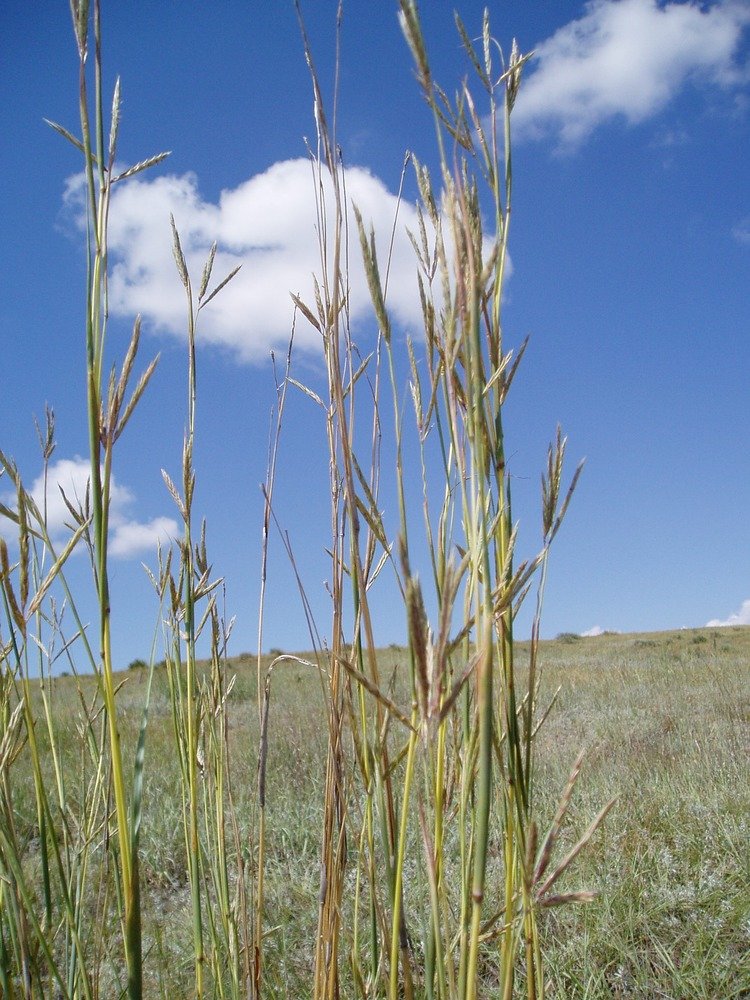
Botanical Details:
- Scientific name: Andropogon gerardii
- Family: Poaceae (Grass Family)
- Common names: Big Bluestem, Turkey Foot
- Height: 4–7 feet tall
- Bloom time: Summer to fall (June-September)
- Flowers: Purplish, fingered seed heads resembling a turkey’s foot
- Hardiness zones: USDA 3–9
Why Plant Big Bluestem?
Ecological Powerhouse
Big Bluestem provides food and habitat for numerous species, including grasshoppers, skippers, and prairie birds. Its dense growth offers excellent nesting cover for ground-dwelling birds and small mammals, and its deep roots support mycorrhizal fungi and beneficial soil microbes.
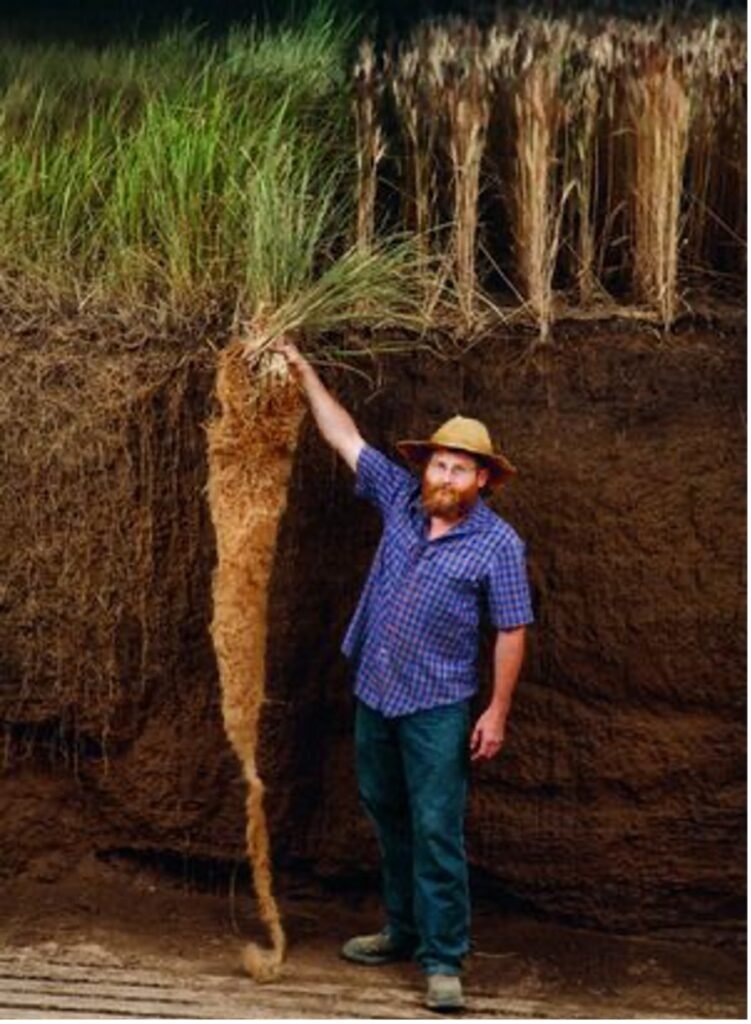
Drought-Tolerant and Resilient
This native grass is extremely drought-resistant once established and helps reduce erosion, making it a smart choice for eco-friendly landscaping, meadows, and habitat restoration projects.
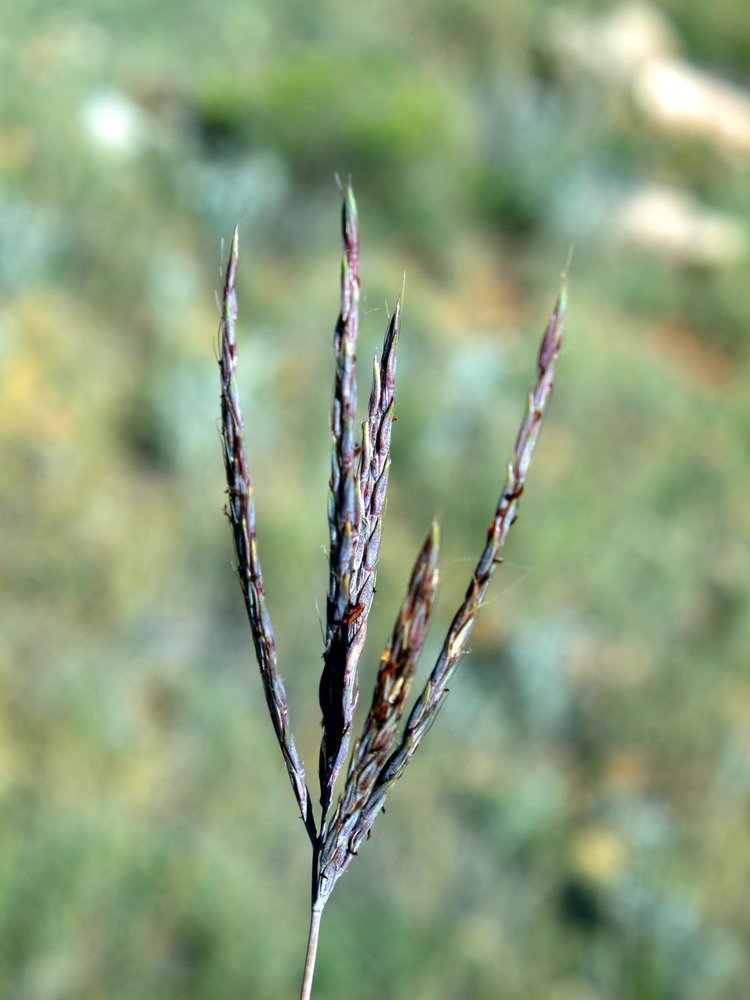
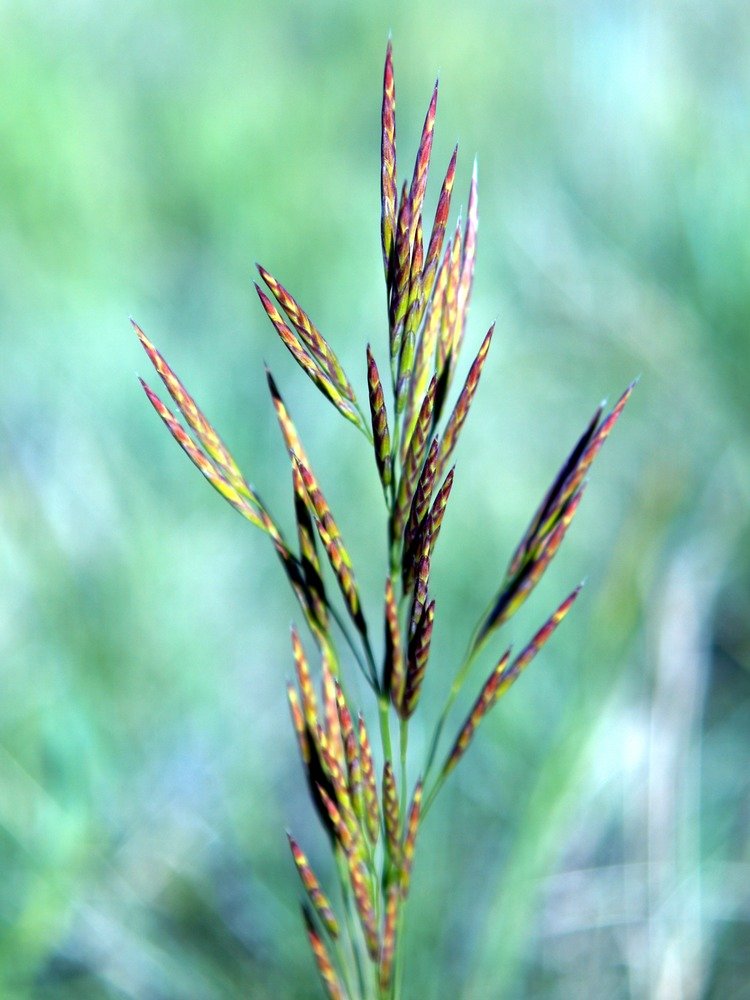
Growing Conditions
Sunlight:
- Requires full sun for best growth and upright form
Soil:
- Adaptable to a wide range of soils, including clay, loam, and sandy soils
- Prefers well-drained soil but tolerates periodic drought or heavy moisture
Water:
- Needs minimal watering once established
- Deep roots allow it to thrive in tough conditions
Check out the hive
The Hive is a personalized native plant database, curated from scientific resources and tailored to your exact ecoregion. It offers detailed growing information for over 75 species.
How to Grow Big Bluestem
Planting:
- Sow seeds in spring or fall (cold stratification improves germination)
- Space plants or sow densely in restoration areas for a full prairie look
- Combine with wildflowers or other native grasses for biodiversity
Maintenance:
- Virtually maintenance-free once established
- Can be cut back in late winter to refresh growth
- Burn or mow every few years in larger plantings to mimic natural disturbance
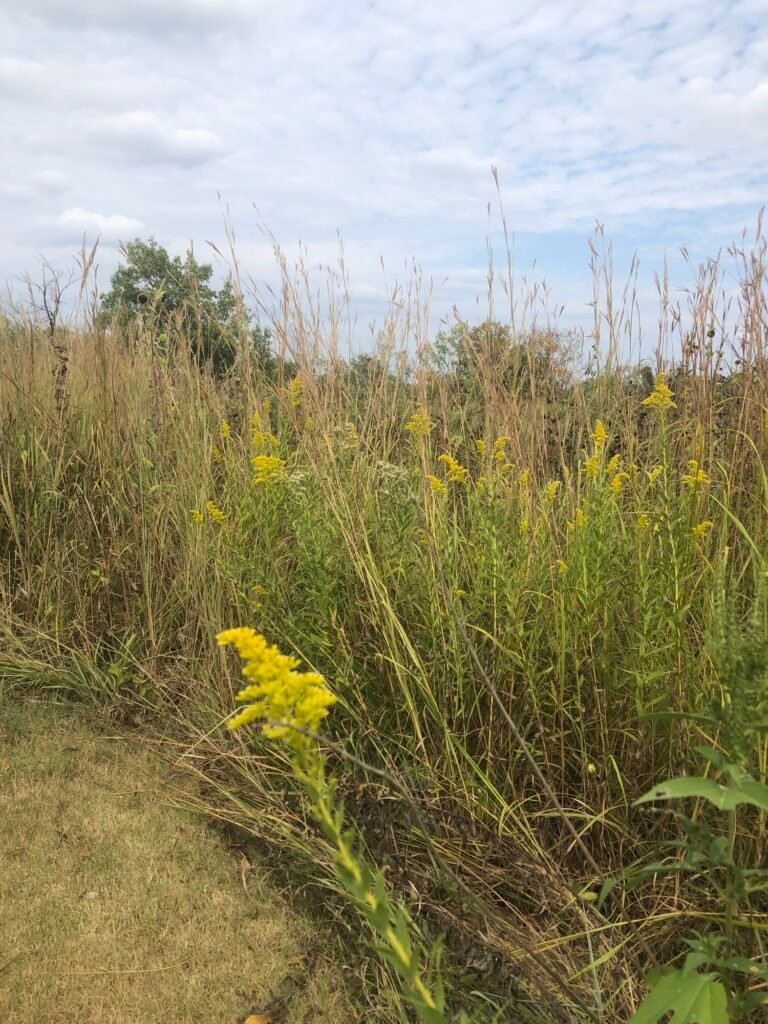
Companion Plants
Big Bluestem adds height, texture, and movement to natural plantings. It pairs well with sun-loving natives such as:
- Purple Coneflower (Echinacea purpurea)
- Butterfly Milkweed (Asclepias tuberosa)
- Switchgrass (Panicum virgatum)
- Blazing Star (Liatris spp.)
Together, these plants form resilient, layered prairies that support a broad spectrum of pollinators and wildlife.
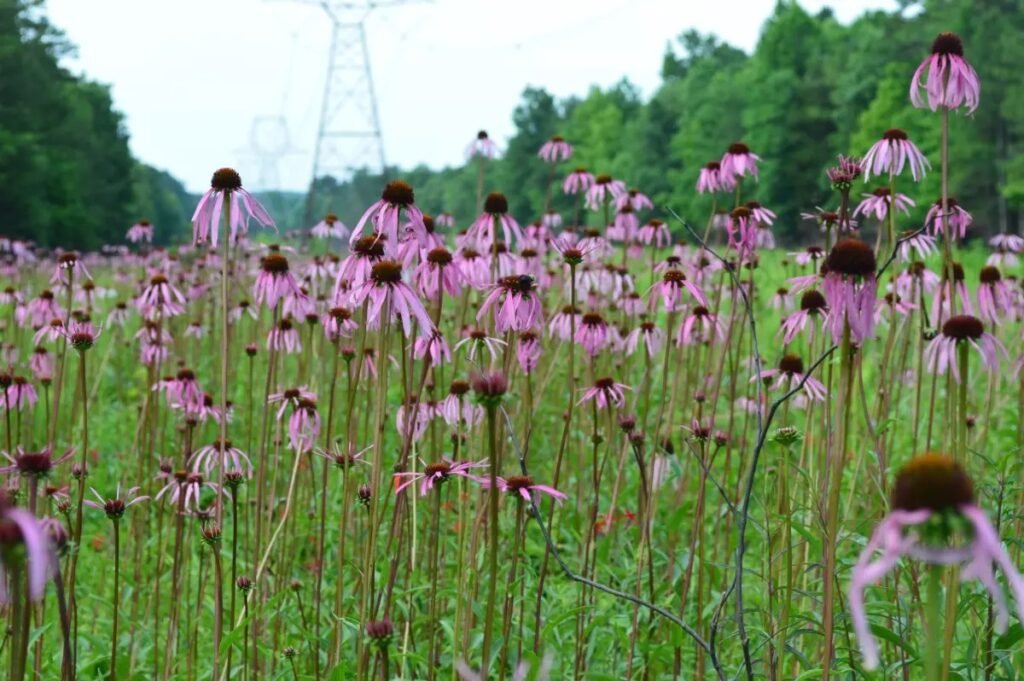
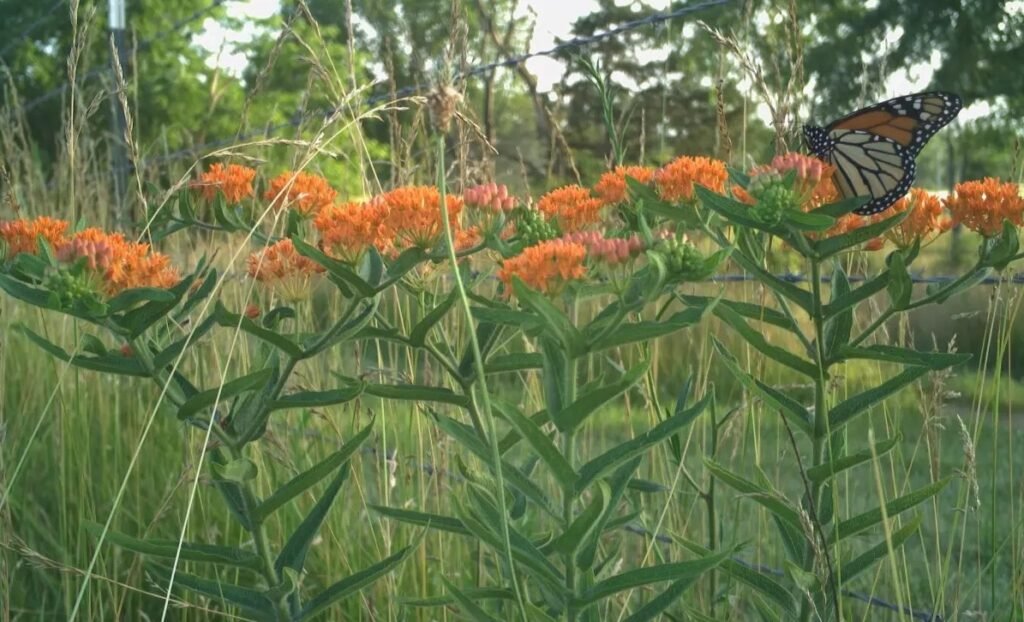
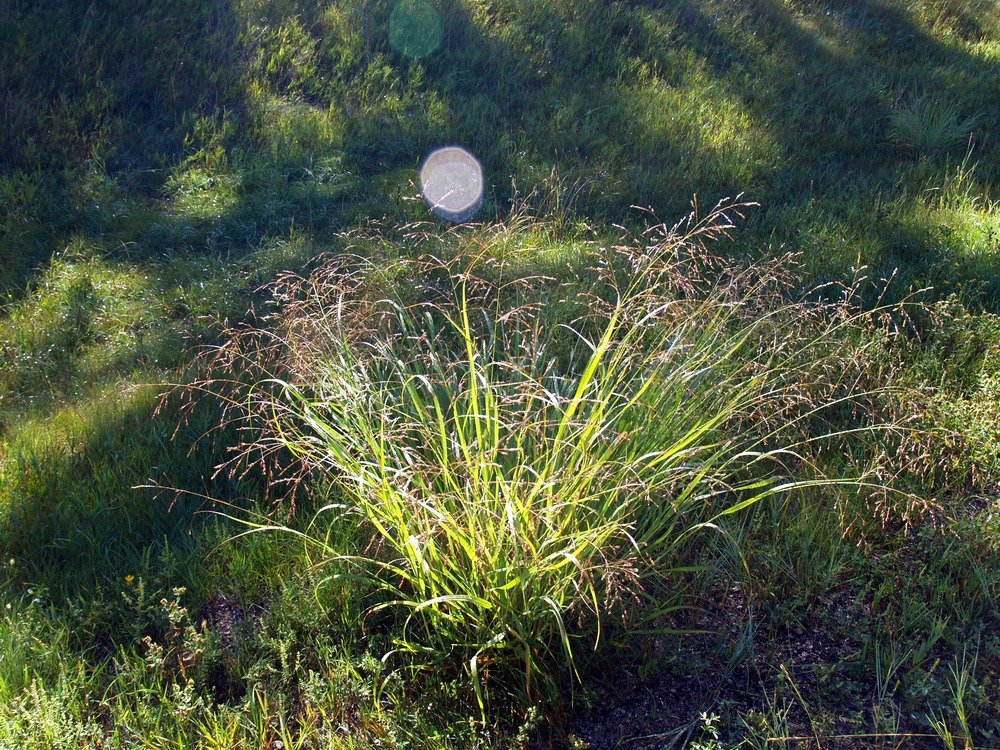
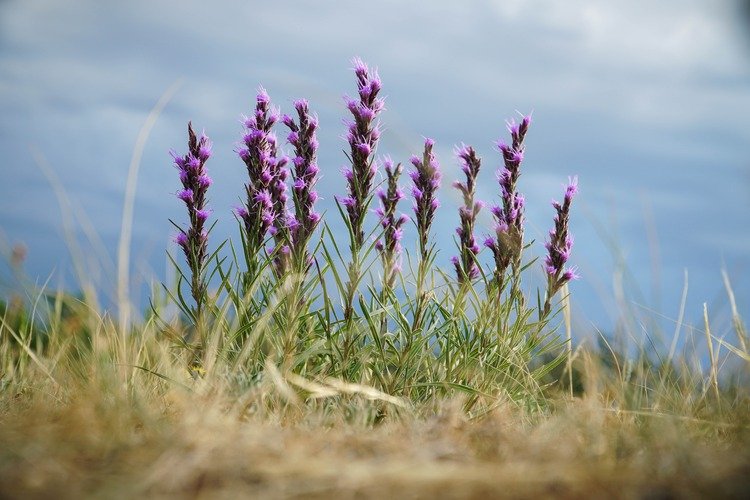
Planting Big Bluestem Contributes To:
- Rebuilding native prairie ecosystems
- Providing critical habitat for insects, birds, and mammals
- Improving soil health and reducing erosion
- Creating drought-tolerant, low-maintenance landscapes
Final Thoughts
Big Bluestem isn’t just a grass—it’s the backbone of tallgrass prairie ecosystems. Its towering form, deep roots, and wildlife value make it a powerful ally in ecological landscaping, habitat restoration, and climate-smart gardening. Whether you’re designing a prairie or adding structure to a native border, Andropogon gerardii offers both beauty and purpose.



